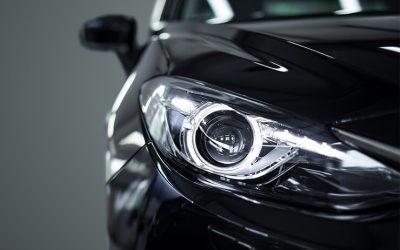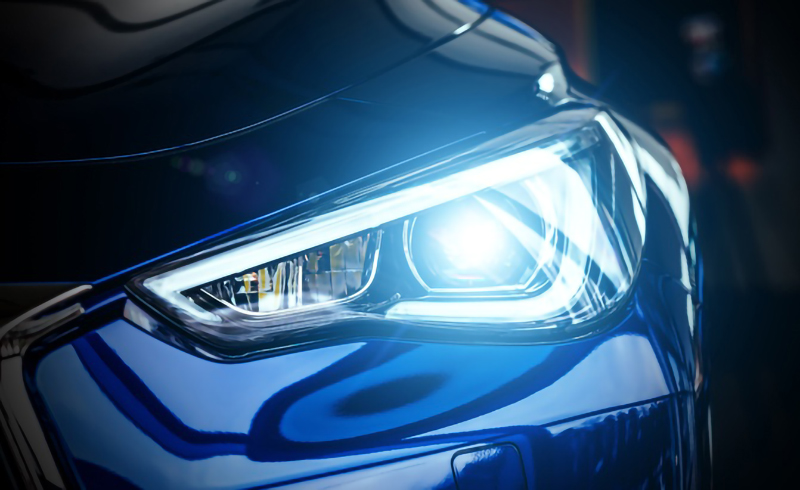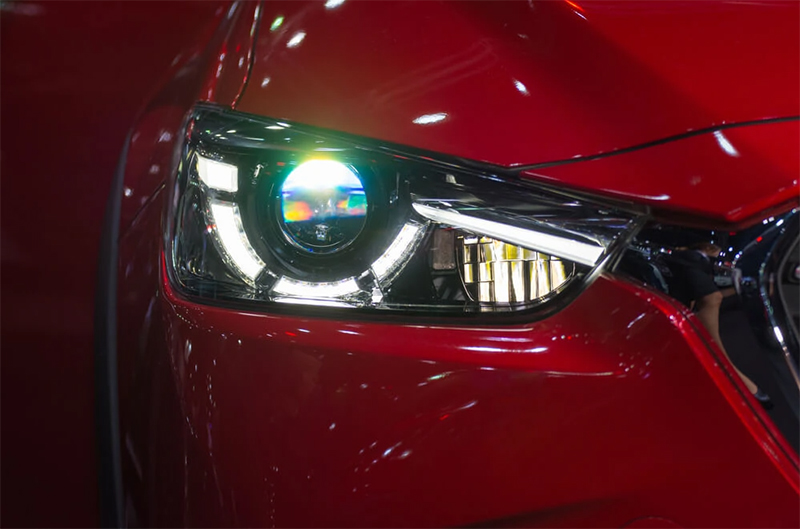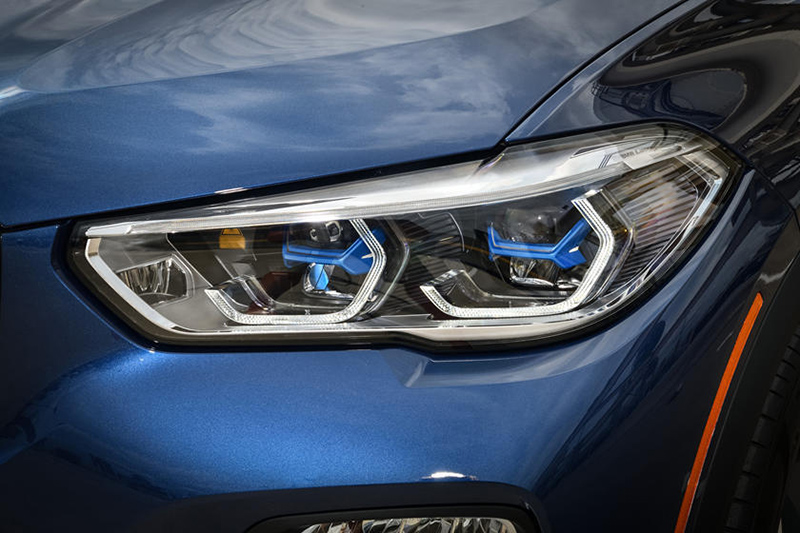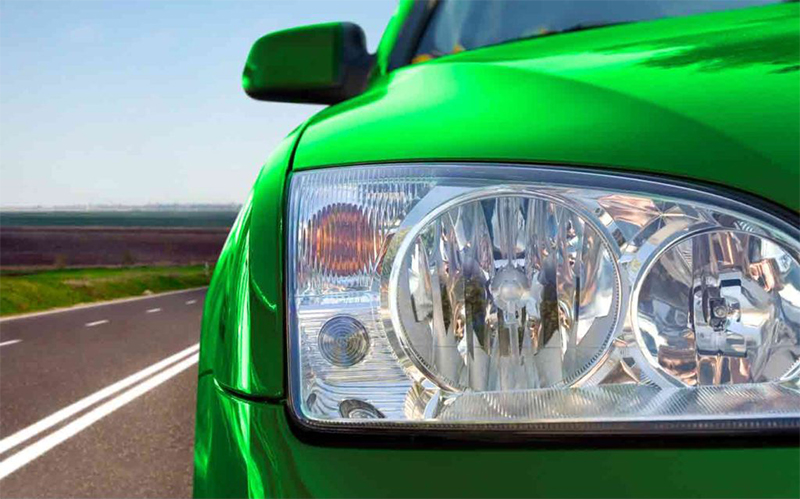Based on the bulb used, there are four major types of headlights, including halogen headlights, HID headlights, LED headlights, and laser headlights. What are their respective advantages and disadvantages? Which one should you choose? Read this blog before making a decision!
HID Headlights
HID headlights typically do not contain filament bulbs. They produce light when an arc of electric power passes across a pair of electrodes that are trapped inside a glass tube filled with xenon gas, so High-Intensity Discharge headlights or HID headlights are also known as Xenon headlights or Arc headlights.
HID headlight bulbs also contain vaporized metals like metal halides and mercury. The passage of electric current through the arc melts the vapors of the metals and converts them into plasma that glows in a shade of white-blue. This is why the light produced by HID headlights is extremely intense.
Pros of HID Headlights
HID headlights produce extremely bright light in the spectrum of white-blue and typically provide a greater (farther) range of illumination. Since there is no filament in HID bulbs to burn out, these headlights are more likely to last longer.
Cons of HID Headlights
HID headlights are slow in turning on because they need to take several seconds to warm up and come to their maximum brightness. Also, light in the blue-white spectrum can be too bright and may not only blind oncoming drivers but also hamper their vision when it comes to seeing anything that is dimmer. What’s worse is that your vision will also be affected. You will be able to see everything ahead very clearly, but be almost blind to anything that is outside the spread of the light beam.
LED Headlights
LED (Light-Emitting Diode) headlight bulbs function by passing electricity through a diode, or a semiconductor, that produces photons, a process called electroluminescence.
Pros of LED Headlight
LED headlights are energy-efficient and can be switched on or off quickly. LED bulbs are small and compact, which makes it possible for manufacturers to come up with sleeker headlight designs and allows more flexibility in styling other assembly components.
LED headlights can produce a bright white light that illuminates up to a mile ahead without blinding oncoming traffic. They can also be designed to emit any other color of the spectrum.
Cons of LED Headlights
The cost of LED headlights is typically higher than halogen and HID headlights. A heat sink must be built into the LED headlights to prevent the base-emitter from overheating, making the system complicated and expensive.
Laser Headlights
Laser headlights function by using a laser that is projected into the headlight housing that contains phosphorus. When laser headlights are turned on, a chemical reaction between the light and phosphorus occurs, producing the light you see.
Pros of Laser Headlights
Laser headlights are more efficient. Compared with LED headlights, they can produce 1,000x the amount of light by consuming half the amount of energy. They are also 10x smaller than LED headlights, which allows manufacturers to design a delicate assembly. Also, laser headlights are far-reaching, highly adaptable, and can easily be switched on/off.
Cons of Laser Headlights
Laser headlights are very expensive. They generally produce more heat than LED headlights, which means the assembly requires more sophisticated built-in cooling systems. In addition, laser lights are currently only available for high beams, so they must be paired with regular halogen, HID, or LED bulbs.
Halogen Headlights
You may find that most cars on the road today come with halogen headlights. Halogen headlights contain a tungsten filament in an enclosed bulb that is heated up and glows when turned on. These bulbs are sealed and filled with halogen gas which is a combination of bromine and iodide. These gases are used to ensure that the filament does not thin and break, and to reduce the blackening that usually occurs inside the bulb. As a result, the filament burns much hotter and produces a brighter light. Some halogen bulbs also have a blue coating to make them appear brighter than they are.
Pros of Halogen Headlights
Halogen headlight bulbs are inexpensive and easy to replace. They produce a brighter light beam and generally last for a longer time. These bulbs are small in size, and therefore, take up less space within the vehicles. Among the newer headlights that are available today, halogen headlights may be the most affordable.
Cons of Halogen Headlights
Standard halogen headlights burn with a slight yellowish hue, so the beam of light does not cast further ahead.
How to Choose the best Halogen Headlights?
There are some things you should consider before purchasing halogen headlight assemblies.
First, make sure the halogen headlights meet or exceed DOT/SAE standards for photometry and safety. Quality halogen headlights are rigorously tested to ensure superior operation for the improved visibility of your vehicle, no matter the time of day or weather conditions. What tests have they passed? Temperature & humidity, salt spray, dust, moisture & shock-resistance, etc.
It is also important to make sure that the headlights are street legal. Some halogen headlights may pass DOT/SAE tests, but are not built for the road. Instead, they are designed for recreational off-roading or commercial applications. Therefore, make sure your halogen headlights are for the road.
Another valuable tip you need to remember is to buy halogen headlights from reliable and reputable manufacturers. They can provide quality halogen headlights at unbeatable prices, as well as professional vehicle advice and extraordinary customer service.
Another question you might ask is how do you choose between OEM headlights and aftermarket headlights? Check here:
OEM vs. Aftermarket Headlights for Your Car: How to Choose


